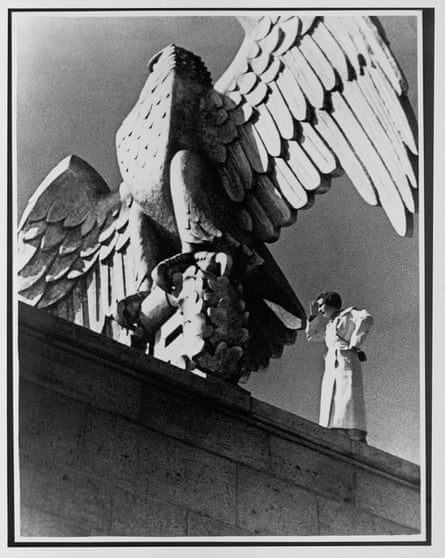Pop music is simple. That’s the idea, anyway. Since the advent of recorded music, the most widely heard music in the world tends to be sharp, catchy and direct. Typically, pop songs are three-minute bursts of heartbreak or excitement or bravado, and they’re ferociously obvious enough to get stuck in your head for hours at a time. But according to a recent scientific study, pop music is actually growing more melodically simple over time.
In a study published in July, researchers from London’s Queen Mary University algorithmically studied the melodies of decades’ worth of US Billboard chart hits, and came to the conclusion that the melodies driving those songs have grown less complex over the years. The researchers stress that this isn’t a qualitative judgment, and they’ve taken pains in the discussion to compensate for the popularity of rap music, a genre where melody can often be incidental. Still, the existence of this kind of study can serve to bolster certain bar-room conversations. If you’re convinced, for instance, that the music of your own youth is superior to whatever’s being made these days, then you can now cite a scientific paper to claim that today’s hits are just dumbed-down slop.
I’m not so sure. For the past six years, I’ve been engaged in a ridiculous exercise – writing a column for the website Stereogum in which I review every No 1 hit in the history of the Billboard Hot 100 – the same US pop chart that the Queen Mary University researchers used to build their database. The Hot 100 has continually existed since 1958, and nearly 1,200 songs have reached the top of that chart. I’ve reviewed more than a thousand of them. And while I’m not a scientist, I don’t see a whole lot of anecdotal evidence that pop hits are becoming any simpler, melodically or otherwise.
By transcribing each song’s notes into a simplified computer Midi file, the researchers boiled them down to nothing but melody, taking lyrics and production techniques and societal context out of the equation, and they’ve found that pop hits have grown mathematically less complex, with inflection points arriving in 1975, the moment that disco first stormed the charts, and in 1996 and 2000, crucial years for the growing pop dominance of hip-hop. If those trends keep up, our descendants will presumably get down to monotonal dirges.
It’s fascinating to see academic researchers tackle the subject of pop music, a messy and unwieldy art form that consistently frustrates the people who love it the most. Part of the appeal of the Billboard Hot 100 is the idea that there’s a through-line that binds all of pop history together, even as the music and the modes of consumption change. Certain things are evergreen: the Beatles, for instance, still have more No 1 hits than any other artist, though Mariah Carey is hot on their heels. But other things keep changing, and one of those things is apparently the very nature of melody in pop music.
As a layman, I can say: Well, yeah. It should be different. Still, melodic complexity is a funny lens to use when you’re talking about pop music. The early days of the Hot 100 were full of moon-eyed love lullabies recorded by and for teenagers – songs like the Teddy Bears’ To Know Him Is to Love Him or the Fleetwoods’ Come Softly to Me. If these songs are more melodically inventive than something like Sabrina Carpenter’s Please Please Please, I can’t hear it.

In writing my column, I’ve noticed certain historical moments when melodic and rhythmic structures suddenly grew more unpredictable – the late 60s, for instance, when the Beatles and the Beach Boys were experimenting with unconventional structures and orchestrations; or the late 90s, when rap and R&B producers such as Timbaland and Darkchild built jagged and alien forms of electronic syncopation.
The earliest days of the Hot 100 coincided with the rise of rock’n’roll, when the new breed of stars competed with and sometimes sought to emulate an older generation of big-band crooners, and those guys prized a certain sophistication in vocal phrasing. The doo-wop groups of the late 50s and early 60s also built their melodic structures mostly out of vocals, so maybe that skews the graphs, too. Still, I don’t think a song like Elvis Presley’s Are You Lonesome Tonight? sounds any more melodically rich than, say, Taylor Swift’s Anti-Hero. Maybe I’m just not hearing the Midi files or looking at the notation.
But nobody looks at Midi files or notation when they’re processing pop music. It’s an in-the-moment art form, one much more dependent on technological rupture and societal context than pure melody. In recent years, for instance, the pop charts have become the dominion of online fan armies who attempt to manipulate chart figures to juice their favourites’ stats. In the US, pop consistently sits at the centre of conversations about sexuality, class and especially race – and those won’t show up on a chart of melodic notation.
This year, one of the big stories on the Billboard Hot 100 has been the preponderance of diss tracks, with Kendrick Lamar and Megan Thee Stallion reaching No 1 by taking explicit shots at their rivals. Another has been the ongoing conversation between country music and hip-hop, as Beyoncé, Shaboozey, and the duo of Post Malone and Morgan Wallen have landed huge hits that fall somewhere in the Venn diagram of two genres that play vastly different roles in US life. Maybe those songs have simple melodies, but that doesn’t mean the songs play simple roles. Pop music is more than melody. Maybe you can’t see it if you’re looking at sheet music, but the pop landscape is as fraught and fascinating as it’s ever been.
-
Tom Breihan is senior editor at the music website Stereogum and author of The Number Ones
Source: theguardian.com





















